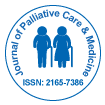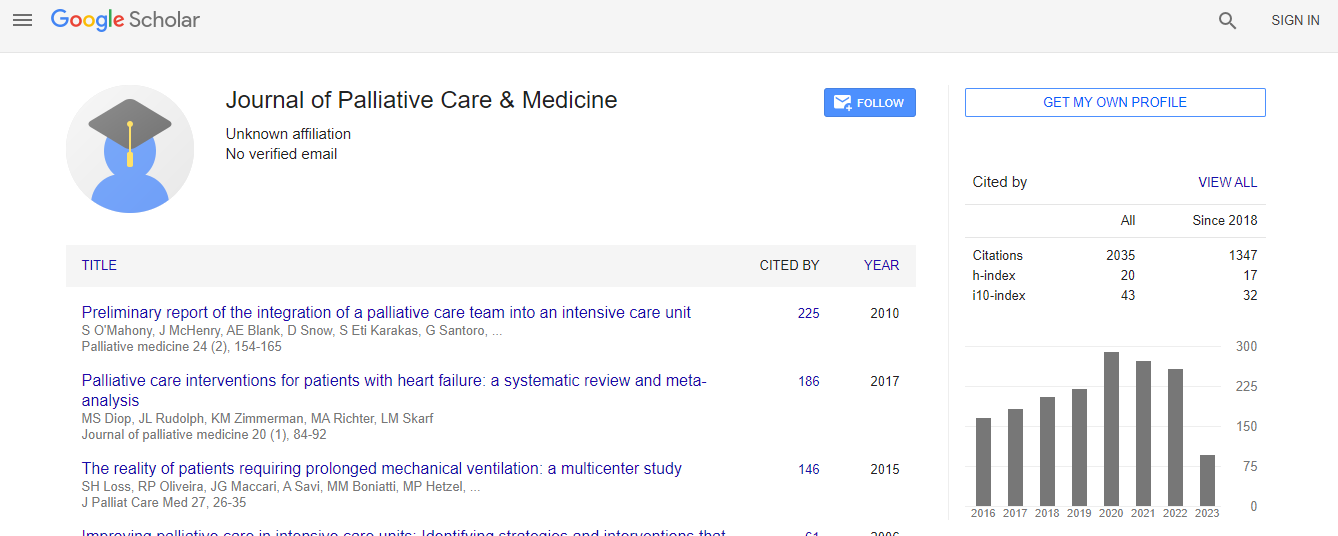Our Group organises 3000+ Global Conferenceseries Events every year across USA, Europe & Asia with support from 1000 more scientific Societies and Publishes 700+ Open Access Journals which contains over 50000 eminent personalities, reputed scientists as editorial board members.
Open Access Journals gaining more Readers and Citations
700 Journals and 15,000,000 Readers Each Journal is getting 25,000+ Readers
Google Scholar citation report
Citations : 1689
Journal of Palliative Care & Medicine received 1689 citations as per Google Scholar report
Journal of Palliative Care & Medicine peer review process verified at publons
Indexed In
- Index Copernicus
- Google Scholar
- Open J Gate
- Genamics JournalSeek
- China National Knowledge Infrastructure (CNKI)
- Electronic Journals Library
- RefSeek
- Hamdard University
- EBSCO A-Z
- OCLC- WorldCat
- Virtual Library of Biology (vifabio)
- Publons
- Geneva Foundation for Medical Education and Research
- Euro Pub
- ICMJE
Useful Links
Recommended Journals
Related Subjects
Share This Page
What do you want?
4th International Conference on Palliative Care, Medicine and Hospice Nursing
Tony Bonser
St Catherines Hospice, Lancashire
Posters & Accepted Abstracts: J Palliat Care Med
Abstract
Patients are people too. I am involved in EoLC because of my personal experience of caring for my son during his terminal illness. I dream we can work towards a system of fully integrated, holistic care for those near death. This will involve a culture-change in the relationship between medical professionals and patients/carers, in line with the patient-centered philosophy embodied in the NHS Constitution, and with the recommendations of the Francis Report, the Neuberger Report, “One Chance to Get it Right,“ and the NICE guidelines 2016, seeing patient and professional in a partnership, defining and meeting the perceived needs of the patient. Communication will be central to this development. Professionals and patients must evolve a common language comprehensible to both, and an atmosphere in which patients and carers feel empowered to become involved in the decision-making process, and thus to take back some control of their condition and its management. Great sensitivity on the part of the professionals as to the emotional effects of their discussions on patients will be needed along with an understanding that everyone is an individual, with specific and personal needs, and that “one size fits all,” will not meet their needs.Biography
E-mail: tbonser@aol.com

 Spanish
Spanish  Chinese
Chinese  Russian
Russian  German
German  French
French  Japanese
Japanese  Portuguese
Portuguese  Hindi
Hindi 
